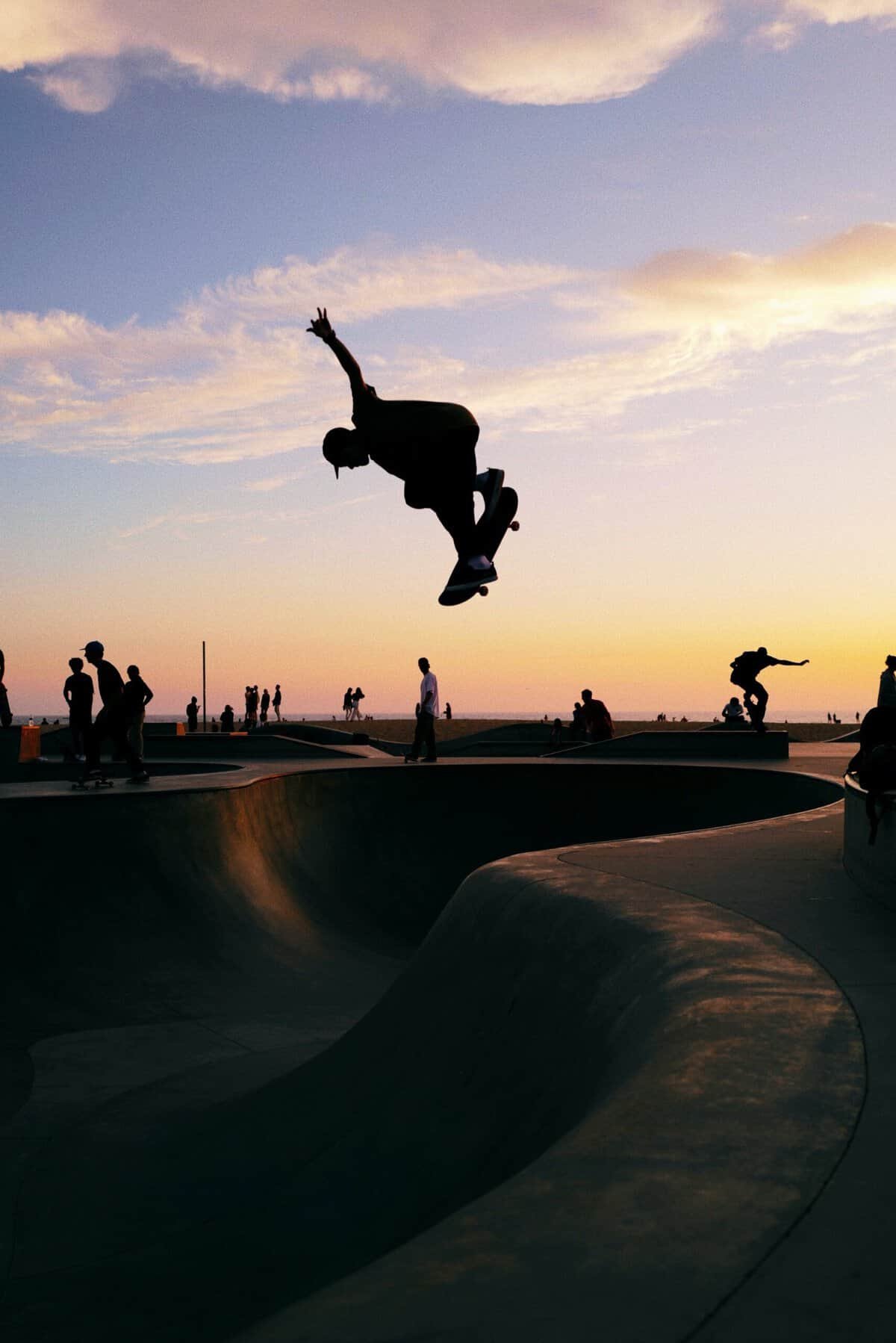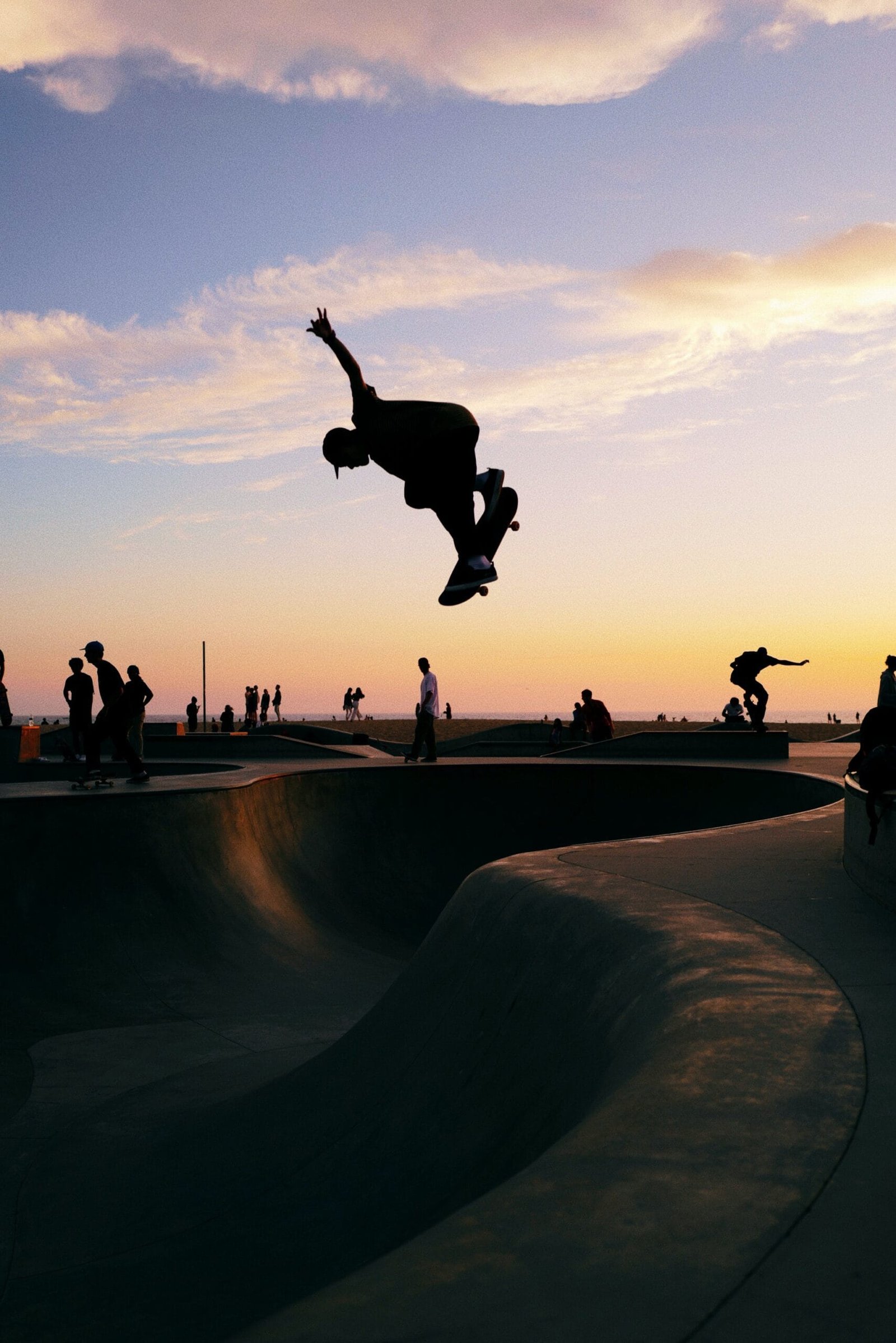So, you’ve mastered a few basic flat-ground tricks on your skateboard, but now you’re looking to take your skills to the next level and tackle more complex maneuvers. It can be a bit daunting at first, but with the right mindset and approach, you’ll be surprised at how quickly you can progress. Whether it’s learning new flip tricks, incorporating manuals and grinds, or even venturing into the world of ramp and transition skating, this article will guide you through the steps to elevate your skateboarding game and achieve those impressive tricks you’ve always dreamed of. Get ready to push your limits and unlock your full potential on your board!
Mastering the Basics
Perfecting Your Ollie
The ollie is the fundamental trick in skateboarding and serves as the foundation for many other tricks. To perfect your ollie, start by placing your back foot on the tail of the skateboard and your front foot just below the bolts of the front trucks. Bend your knees and shift your weight to the back foot as you pop the tail down and jump into the air. As you do this, slide your front foot up towards the nose of the skateboard, leveling it out in the air. Land with your knees slightly bent to absorb the impact. Practice this motion repeatedly, focusing on timing and keeping the board level, to master the ollie.
Nailing Your Manuals
Once you’ve mastered the ollie, it’s time to work on your manuals. A manual is when you balance on only two wheels, either the back or the front, while rolling. To nail your manuals, start by finding a flat and smooth surface. Begin by rolling at a comfortable speed and gradually lift the front or back wheels off the ground, using your core and balance to maintain the manual. Keep your body centered over the wheel that is off the ground and focus on small adjustments to stay balanced. Practice shifting your weight and finding the sweet spot to stay in a manual for an extended period.
Solidifying Your Pop Shove-its
Pop shove-its are a great way to solidify your foundation and add style to your tricks. To perform a pop shove-it, position your feet similar to an ollie, with your back foot on the tail and your front foot angled diagonally across the skateboard. Pop the tail down, jump, and simultaneously kick your front foot off the board while using your back foot to scoop the tail in a sweeping motion. This will cause the skateboard to spin 180 degrees horizontally. Catch the board with your back foot and land with your knees slightly bent. Focus on the timing of the pop, scoop, and catch, as well as staying centered and balanced throughout the trick.
Increasing Difficulty
Exploring Flip Tricks
Once you’ve mastered the basics, it’s time to explore flip tricks. Flip tricks involve flipping or spinning the skateboard while in the air. Start by learning the kickflip, which involves flicking the edge of the skateboard with your front foot to make it spin vertically. Practice the flick motion and timing, ensuring the board flips beneath your feet, and catch it with your back foot to land smoothly. From there, you can progress to more advanced flip tricks such as heelflips, varial flips, and tre flips. Remember to start small and gradually increase the difficulty, focusing on consistency and proper technique.
Attempting Grinds and Slides
Grinds and slides add a whole new dimension to your skating. They involve sliding or grinding along obstacles such as rails, ledges, and curbs. Start by learning the basic 50-50 grind, where both trucks slide along a rail or ledge. Practice approaching the obstacle at a comfortable speed, positioning your feet over the trucks, and finding the balance point. Gradually increase the difficulty by trying different grinds such as boardslides, noseslides, and feeble grinds. Remember to use your arms for balance and maintain a low center of gravity for better control.
Adding Spins and Flips to Your Tricks
To add more flair to your tricks, incorporate spins and flips. Start with 180-degree spins and progress to 360s and even 540s. The key to spinning is to wind up your upper body and shoulders in the opposite direction of the spin before releasing and unwinding. In terms of flips, try incorporating kickflips or heelflips into your ollies or combining them with grinds and slides. Experiment with different combinations and find your own style. As you become more comfortable with spins and flips, you can start pushing the boundaries and attempting more complex rotations and multi-flip tricks.

Building Technique and Confidence
Commitment and Persistence
Skateboarding requires commitment and persistence. Don’t get discouraged by failed attempts or falls, as they are a natural part of the learning process. Embrace the challenges and keep pushing yourself to try new tricks and overcome obstacles. Celebrate every improvement and milestone along the way, no matter how small. With dedication and perseverance, you will gradually build technique and confidence in your skating abilities.
Progressive Training Methods
To enhance your progress, incorporate progressive training methods into your routine. Start with warm-up exercises to loosen your muscles and prevent injuries. Focus on specific skills or tricks during each practice session and set achievable goals. Break down complex tricks into smaller components and practice each part individually before putting them together. Gradually increase the difficulty and intensity of your workouts, challenging yourself to go a little further each time. Remember to listen to your body and take breaks when necessary to avoid overexertion.
Incorporating Style into Your Tricks
Skateboarding is not just about executing tricks; it’s also about expressing your unique style. Experiment with different stances, body movements, and arm positions to add your personal touch to each trick. Play with timing, rhythm, and flow to make your skateboarding more fluid and visually appealing. Find inspiration from other skaters, videos, and magazines, but don’t be afraid to develop your own style. Embracing your individuality and incorporating it into your tricks will make your skateboarding truly stand out.
Expanding Your Skill Set
Transitioning to Vert Ramps
Transitioning from flat ground to vert ramps opens up a whole new realm of skateboarding. Start by familiarizing yourself with the basics of ramp riding, such as dropping in and pumping for speed. Practice carving back and forth across the ramp, gradually building up your confidence. Once comfortable, start attempting basic aerial tricks like grabbing the board in the air or performing small ollies. As your skills progress, you can move on to more advanced tricks like airs, grabs, flips, and even spins. Remember to always prioritize safety, wear appropriate protective gear, and start with smaller ramps before tackling larger ones.
Venturing into Street Obstacles
Street skateboarding involves utilizing the urban environment to perform tricks on obstacles such as stairs, rails, ledges, and gaps. Start by scouting your local area for skate-friendly spots and skateparks with street-inspired elements. Approach obstacles cautiously and analyze them for potential trick opportunities. Build up your comfort level by practicing basic tricks like ollies and grinds on curbs and smaller obstacles. Gradually progress to more complex tricks, incorporating flips, slides, and manuals. Street skateboarding requires adaptability and creativity, as it encourages you to think outside the box and make the most of your surroundings.
Mastering Complex Combinations
Once you’ve honed your individual tricks, it’s time to start linking them together in complex combinations. By combining tricks seamlessly, you can create impressive lines and showcase your versatility. Experiment with different trick sequences, transitions, and variations to develop your own unique combinations. Focus on smooth transitions and clean execution to ensure fluidity throughout the entire line. Be patient and persistent, as mastering complex combinations may take time and practice. Continually challenge yourself by adding more tricks and expanding the length and difficulty of your lines.

Seeking Guidance and Inspiration
Learning from Experienced Skaters
One of the best ways to progress in skateboarding is to learn from experienced skaters. Surround yourself with a supportive and knowledgeable skateboarding community, whether it’s through local skateparks, skate shops, or online forums. Observe and study more experienced skaters as they execute tricks and maneuvers. Don’t be afraid to ask for advice or guidance; most skaters are happy to share their knowledge and offer tips for improvement. By learning from those who have already mastered complex tricks, you can gain valuable insights and accelerate your own progress.
Watching Tutorial Videos
Tutorial videos are a valuable resource for improving your skateboarding skills. There are countless tutorial videos available online, focusing on specific tricks, techniques, and styles. Search for videos created by reputable skaters or skateboarding organizations, as they often offer detailed explanations and step-by-step breakdowns of tricks. Take your time to study these videos, paying attention to the subtleties of body positioning, foot placement, and timing. By visually understanding the mechanics behind each trick, you can enhance your understanding and execution of complex maneuvers.
Studying Skating Magazines and Media
Skating magazines and media provide a wealth of inspiration and knowledge. Subscribe to skateboarding magazines or follow reputable skateboarding websites and social media accounts to stay updated on the latest trends, events, and influential skaters. Dive into interviews, articles, and photo features to gain insights into the skateboarding culture and community. Pay attention to the styles and techniques of professional skaters showcased in videos and photographs. By immersing yourself in skateboarding media, you can broaden your perspective, spark creativity, and stay motivated to progress in your own skateboarding journey.
By following this comprehensive guide, you can progress from basic flat-ground tricks to more complex ones. Remember to start with the fundamentals, perfecting your ollie, nailing your manuals, and solidifying your pop shove-its. As you increase the difficulty, explore flip tricks, attempt grinds and slides, and add spins and flips to your repertoire. Building technique and confidence requires commitment, persistence, and incorporating progressive training methods. Once you’ve expanded your skill set, venture into vert ramps, street obstacles, and master complex combinations. Seek guidance and inspiration from experienced skaters, tutorial videos, and skating magazines to continue pushing your limits. With time, practice, and a friendly attitude towards progression, you’ll be mastering more complex skateboarding tricks in no time. Happy shredding!

